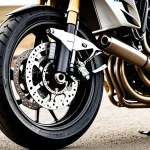Overview of Moto Guzzi V9 Bobber Engine Bolt Torque Specifications
In the realm of maintenance and repair of the Moto Guzzi V9 Bobber, understanding the engine bolt torque specifications is vital for ensuring long-term performance. Precise torque settings are critical because they directly influence the engine’s reliability and safety. Torque specifications refer to the exact amount of tightening pressure that should be applied to bolts, preventing both over-tightening and under-tightening, which could lead to engine damage or failure.
The Moto Guzzi V9 Bobber’s engine design is distinguished by its classic, robust V-twin configuration. This setup not only demands precision torque measurements for effective operation but also requires frequent checks due to its unique architecture.
A lire en complément : Transform Your Journey: The Definitive Guide to Perfecting Honda CB500F Handlebar Ergonomics
Why are proper torque settings so beneficial? For starters, they help maintain the structural integrity of the engine components by distributing pressure evenly. This means less wear and tear over time, leading to fewer repairs and immediate fixes. Correct torque application also enhances overall engine efficiency, allowing for smooth, uninterrupted performance.
In summary, knowing and applying the correct torque specifications is indispensable for anyone involved in repairing or maintaining the Moto Guzzi V9 Bobber. By adhering to proper guidelines, owners can ensure an optimal riding experience.
A lire également : Master Your Triumph Tiger 900: The Effortless Guide to Replacing Rear Brake Pads Like a Pro
Recommended Tools for Torque Specification
For those involved in the maintenance of a Moto Guzzi V9 Bobber, equipping oneself with the right tools can significantly impact the precision of engine bolt torque specifications. A quality torque wrench is paramount. It’s designed to measure the exact pressure applied to bolts, ensuring neither under-tightening nor over-tightening occurs. Opt for a reliable, well-calibrated option that offers a clear scale for precise adjustments.
Beyond torque wrenches, a robust socket set is indispensable. It allows for efficient bolt handling, fitting snugly with varying bolt sizes on the Moto Guzzi V9 Bobber. The right maintenance tools not only facilitate smoother repairs but also enhance the longevity of the bike’s engine.
While the torque wrench takes center stage, consider other supportive tools. For instance, extension bars can aid in reaching inaccessible bolts and digital readers can offer additional accuracy by displaying real-time torque values. Investing in high-quality equipment invariably pays off, resulting in less wear and tear on engine components. So when it comes to maintaining your Moto Guzzi V9 Bobber, the right tools always pave the way for precise, stress-free repair sessions.
Detailed Torque Specifications for Various Engine Bolts
Engine bolts are the unsung heroes ensuring the Moto Guzzi V9 Bobber remains in top form, making knowledge of specific torque values essential for enthusiasts and professionals alike. Precise settings ensure each component functions as designed, preserving the engine’s integrity. Here, we delve into the specific requirements for different bolt categories.
Cylinder Head Bolts
The cylinder head bolts are vital for housing the engine’s combustion chamber. Applying the correct torque stops gas leaks and maintains engine pressure. Follow the manufacturer’s sequence strictly for consistency, beginning with the inner bolts, working outward in a crisscross pattern.
Crankcase Fasteners
A stable crankcase is achieved through balanced pressure distribution. The required torque values ensure a tight seal and limit oil leaks. Focus on a uniform tightening sequence around the crankcase for optimal vibration management and protection of internal parts.
Exhaust System Fasteners
Finally, the exhaust system demands attentive care. Proper torque application minimizes gasket wear and addresses alignment issues. By employing the recommended values and pattern—typically spiral—you ensure efficient exhaust flow and enhanced bike performance.
Adhering to these Moto Guzzi V9 Bobber specifications supports engine longevity and reliability. Leveraging official guides aids in maintaining these high standards.
Step-by-Step Instructions for Achieving Correct Torque Settings
Achieving accurate torque settings on your Moto Guzzi V9 Bobber is essential for optimal engine performance and longevity. Following a structured process ensures that each engine bolt is tightened to perfection.
General Procedure for Tightening Engine Bolts: Begin by referencing the torque specifications for each bolt, found in your maintenance manual. Use a reliable torque wrench to set and measure the torque accurately. Gradually fasten bolts in stages; this ensures consistent pressure displacement, thus safeguarding against overtightening or uneven tension.
Importance of Gradual Torque Application: Incrementally increase torque values in multiple passes rather than reaching the desired setting in one go. This approach promotes even stress distribution across engine components, minimizing the risk of damage.
Verifying Torque Settings Post-Installation: Once all bolts are secured, recheck each for specification adherence using the torque wrench. This step guarantees that no adjustments have shifted during the installation process. Employing these step-by-step guides secures your bike’s engine integrity and performance, making every ride smooth and reliable. Employ precision and patience to ensure full confidence in your torque settings.
Torque Patterns and Techniques for Precision
Achieving precision in engine maintenance relies heavily on using the correct torque sequence and tightening patterns. The crisscross pattern is often applied to distribute stress evenly across engine components, ensuring that pressure isn’t concentrated in one area. This method is particularly vital for parts like the cylinder head bolts, where uniform tightening prevents warping.
Another common technique is the spiral pattern, which helps in maintaining a balanced and secure fitment for exhaust system fasteners. This sequence usually starts at the center and progresses outwardly, allowing for a gradual yet secure tightening.
When handling intricate parts of the Moto Guzzi V9 Bobber, selecting the appropriate method is crucial for effective torque application. Adherence to manufacturer-recommended patterns not only fosters better performance but also prolongs the life of engine components by ensuring even torque distribution.
Practicing these techniques can dramatically decrease the chance of faulty installations, a risk heightened by inconsistent torque. Immense stress placed inappropriately can lead to premature wear, reduced efficiency, and eventual component failure. Thus, understanding and applying these patterns are integral in achieving longevity and reliability in motorcycle maintenance.
Tips for Ensuring Precision in Torque Applications
Achieving precision in torque applications is vital to the durability and performance of your Moto Guzzi V9 Bobber. Regular calibration of tools, such as torque wrenches, is crucial. Proper calibration ensures that your readings remain accurate, allowing for consistent and reliable torque application. Conducting these checks should become routine in your maintenance tips.
Once you’ve applied torque, torque verification is the next critical step. This involves re-checking bolts after a brief running period of the engine to confirm the torque remains within specifications. Variations might occur due to settling of components, so this step guarantees precision throughout.
Avoiding common mistakes, like using improper torque settings, separates a proficient mechanic from an ordinary one. Incorrect settings can lead to either under-tightening, which risks loosening, or over-tightening, which could strip threads. Another frequent error is neglecting to use the appropriate tightening sequence, indispensable for even pressure distribution.
Adopting these precision maintenance strategies not only preserves the structural integrity of the engine but also optimizes your overall riding experience. By following these guidelines, you’ll ensure the reliable functionality of your engine bolt torque specifications.
Visual Aids: Diagrams and Charts for Clarity
For those handling the Moto Guzzi V9 Bobber, diagrams and torque specifications charts are invaluable tools that simplify complex maintenance processes. They offer a visual representation, making it easier to comprehend the correct torque settings and sequences.
Using a torque specifications chart can guide you in understanding the precise pressure needed for different engine bolts. Such charts present detailed insight into torque values for components like cylinder head bolts, crankcase fasteners, and exhaust system fasteners. These visual tools help ensure you’re applying the recommended manufacturer’s guidelines accurately.
Diagrams vividly illustrate the engine’s architecture, providing clarity on bolt locations and their associated sequences. They help depict patterns like the spiral or crisscross, essential for distributing stress evenly. The visual representation aids in grasping specific torque techniques, promoting efficient maintenance.
Incorporating visual learning methods reduces errors significantly, enhancing your repair work’s accuracy. By bridging the gap between theory and practice, diagrams and charts transform potentially complicated procedures into manageable tasks. Embracing these aids can elevate your understanding and confidence in maintaining the Moto Guzzi V9 Bobber engine.









